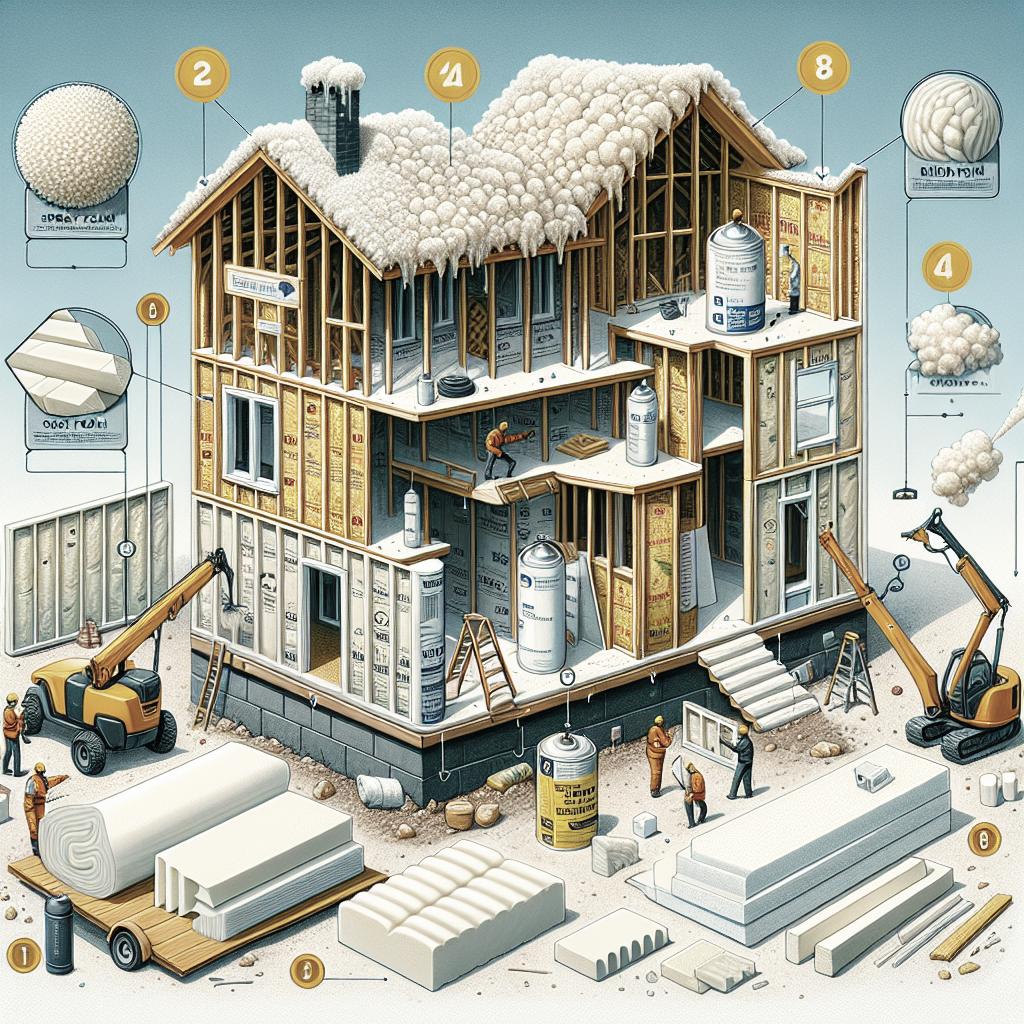Understanding Thermal Insulation Foam Types
Insulating your home is a crucial step toward achieving energy efficiency and comfort. One of the most effective insulation options is foam insulation, renowned for its ability to fill gaps and restrict airflow. In this article, we will explore five prevalent types of foam insulation utilized in residential settings. We’ll dive deep into each type’s distinctive features, applications, and benefits. From polyurethane variations to injection foam and rigid foam boards, understanding these products will arm you with the knowledge to make informed decisions for your insulation needs. As we outline the different properties and use-cases, you’ll gain a clearer insight into which solution might best suit your home improvement projects.
5 Types Of Foam Insulation
Foam insulation is a versatile and effective way to prevent heat loss and reduce energy consumption. There are primarily five types of foam insulation used in the market today. These include spray polyurethane foam, pour polyurethane foam, can foam, injection foam, and rigid foam board.
Each of these types has unique characteristics tailored for various insulation challenges. The selection of foam largely depends on the application area, required R-values, and the specific needs of the project. Understanding the properties of each type can greatly influence both the efficiency and longevity of the insulation installed in residential spaces.
Polyurethane Foam Insulations
Polyurethane foam is a popular choice due to its high insulating capacity and versatility. It’s available in different forms, including spray, pour, and can foam. This type of foam insulation provides excellent sealing features, capable of expanding and filling cavities seamlessly, which makes it ideal for tight or difficult-to-reach spaces.
Spray Polyurethane Foam
Spray Polyurethane Foam (SPF) is widely used for insulating large areas and surfaces that are hard to insulate with other materials. It expands rapidly after application, filling gaps and crevices effortlessly. SPF is praised for its high R-value, making it an effective solution for minimizing heat loss in buildings.
One of the key benefits of SPF is its ability to form an airtight seal, which can significantly reduce energy costs by limiting heat transfer and air leakage. Its application process, however, should be handled by professionals due to the need for specialized equipment and techniques.
Pour Polyurethane Foam
Pour Polyurethane Foam is particularly useful for filling voids and cavities in walls, floors, and ceilings. Unlike spray foam, it’s poured directly into designated areas where it expands and sets to form an insulating barrier. This type of foam is often used in retrofitting projects.
The advantage of pour foam lies in its ability to penetrate complex areas that are otherwise difficult to insulate. It’s also used in soundproofing solutions due to its density and flexibility in application. Like other polyurethane foams, it also provides excellent moisture resistance.
Can Foam
Can foam, also known as canned spray foam, is a convenient option for smaller insulation tasks and DIY projects. It usually comes in a pressurized canister and is applied via a controlled nozzle, enabling precise application in tight spots.
Ideal for sealing small gaps and cracks around windows, doors, and between panels, can foam offers a quick and straightforward solution. Its easy application makes it a favorite among homeowners looking for a cost-effective way to enhance their home’s energy efficiency.
Injection Foam
Injection foam insulation is a versatile solution that involves the injection of foam into wall cavities, typically through small holes. This method is beneficial for properties needing additional insulation without major renovations or removing drywall.
Due to its ability to fill even minute gaps, injection foam is trusted for improving thermal resistance effectively. It is particularly viable in older buildings seeking insulation upgrades. Its performance in cutting down air infiltration makes it a smart choice for energy-conscious homeowners.
Rigid Foam Board
Rigid foam board insulation consists of panels made from polystyrene, polyisocyanurate, or polyurethane. These boards are highly effective for exterior wall sheathing and basement insulation due to their durability and structural support.
Offering excellent thermal resistance, rigid foam boards are often chosen for areas that require a continuous insulation layer. They help retain heat within walls, effectively improving the thermal envelope of homes. Additionally, they are moisture resistant, contributing to the longevity of the building structure.
The Bottom Line About Residential Foam Insulations
Whether choosing polyurethane variants, injection foam, or rigid foam boards, selecting the right insulation depends on specific needs and the architectural particulars of your home. Framework compatibility, ease of installation, and financial considerations all play a role in determining the best type of foam insulation for a property.
Incorporating the correct form of foam insulation can substantially enhance energy performance, reduce utility costs, and contribute to a more comfortable living environment. Each type of foam insulation offers unique advantages, and thoughtful selection can maximize benefits while ensuring long-term efficiency.
Final Thoughts
| Foam Type | Applications | Advantages |
|---|---|---|
| Spray Polyurethane Foam | Large areas, hard-to-reach spaces | High R-value, airtight seal |
| Pour Polyurethane Foam | Cavities, retrofitting | Fills complex areas, moisture resistance |
| Can Foam | Small gaps, DIY projects | Easy application, cost-effective |
| Injection Foam | Wall cavities, insulation upgrades | Fills minute gaps, reduces air infiltration |
| Rigid Foam Board | Exterior sheathing, basements | Continuous insulation layer, moisture resistance |


